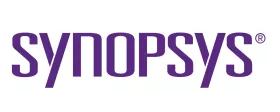Why 2023 Holds Big Promise for Multi-Die Systems
If it seems like everyone’s talking about multi-die systems, you’re not mistaken. The semiconductor industry isn’t only talking about them—multi-die systems are already in the market. With compute demands ballooning and Moore’s law waning, integrating multiple heterogeneous dies, or chiplets, into a system in the same package offers a way to meet aggressive power, performance, area (PPA), cost, and time-to-market requirements. Multi-die systems allow designers to accelerate scaling of system functionality at a cost-effective price, reduce risk, and rapidly create new product variants for flexible portfolio management.
But while the multi-die system train left the station a year or two ago, it has really only been chugging along. Until now. The coming year, 2023, looks to be an inflection point as multi-die systems start to make deeper inroads into the mainstream semiconductor world.
Why do we think 2023 is the year for the seismic shift to multi-die systems? The big change is that the broader ecosystem around these architectures is maturing, providing greater opportunities for cost-effectiveness as well as success. Investments in design and verification tools, IP, and manufacturing are converging to help overcome previous barriers, paving the way for adoption of multi-die systems to ramp up. Read on for more insights into what’s on tap for multi-die systems in the coming year.
To read the full article, click here
Related Chiplet
- Interconnect Chiplet
- 12nm EURYTION RFK1 - UCIe SP based Ka-Ku Band Chiplet Transceiver
- Bridglets
- Automotive AI Accelerator
- Direct Chiplet Interface
Related Blogs
- Synopsys and Alchip Accelerate IO & Memory Chiplet Design for Multi-Die Systems
- The Automotive Industry's Next Leap: Why Chiplets Are the Fuel for Innovation
- Streamlining Functional Verification for Multi-Die and Chiplet Designs
- Cadence Sets the Gold Standard for UCIe Connectivity at Chiplet Summit '24
Latest Blogs
- Thermal Management in 3D-IC: Modeling Hotspots, Materials, & Cooling Strategies
- 3D Chips: Socionext Achieves Two Successful Tape-Outs in Just Seven Months
- Intel Foundry Collaborates with Partners to Drive an Open Chiplet Marketplace
- 3D-IC Packaging: Wafer Stacking, Hybrid Bonding, and Interposer/RDL Techniques
- Through-Silicon Vias (TSVs): Interconnect Basics, Design Rules, and Performance
